Click on images to enlarge

habit (Photo: Sheldon Navie)
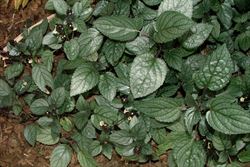
habit (Photo: Sheldon Navie)
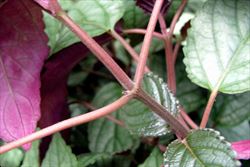
close-up of younger stem and leaf stalks (Photo: Sheldon Navie)
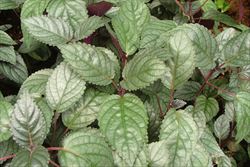
leaves (Photo: Sheldon Navie)
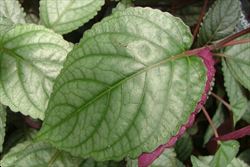
close-up of leaf with bluntly-toothed margins (Photo: Sheldon Navie)
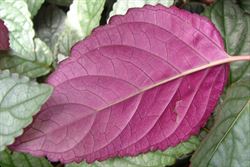
close-up of purplish-coloured leaf underside (Photo: Sheldon Navie)
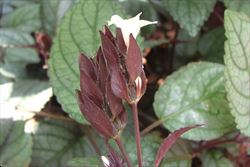
flower cluster with purplish floral bracts (Photo: Sheldon Navie)
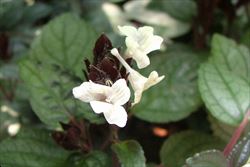
close-up of tubular white flowers (Photo: Sheldon Navie)
Scientific Name
Hemigraphis alternata (Burm. f.) T. Anderson
Synonyms
Hemigraphis colorata (Blume) Hallier fil.Ruellia alternata Burm. f.
Family
Acanthaceae
Common Names
cemetery plant, metal leaf, metal-leaf, metallic plant, purple waffle plant, red ivy, red flame ivy, red-flame ivy, redivy
Origin
This species originated in south-eastern Asia (i.e. on Java in Indonesia).
Naturalised Distribution
This species is currently only known to be naturalised in a few locations in far northern Queensland.
It has also become naturalised in other parts of the world, including on several Pacific islands (i.e. American Samoa, Western Samoa, Palau, the Cook Islands, Tonga, Fiji, Niue, French Polynesia and Hawaii) and in south-eastern USA (i.e. Florida).
Notes
Red ivy (Hemigraphis alternata) is regarded as an emerging or potential environmental weed in northern Queensland. It currently has a relatively localised distribution, but is on the Cape York Peninsula Priority Weed List because of its potential to become an important environmental weed in this region. This species is shade-tolerant, and is capable of invading the understoreys of wetter forests in warmer climates.
On Niue, red ivy (Hemigraphis alternata) has formed large mats of vegetation in disturbed open and closed forests, while in Fiji it is becoming naturalised along trails in forests, particularly those that are close to habitation. In American Samoa, it has become naturalised at several locations, including conservation areas (e.g. in the Vailima Reserve and at the entrance to the O le Pupu Pue National Park), where it forms dense low stands that exclude other species.

